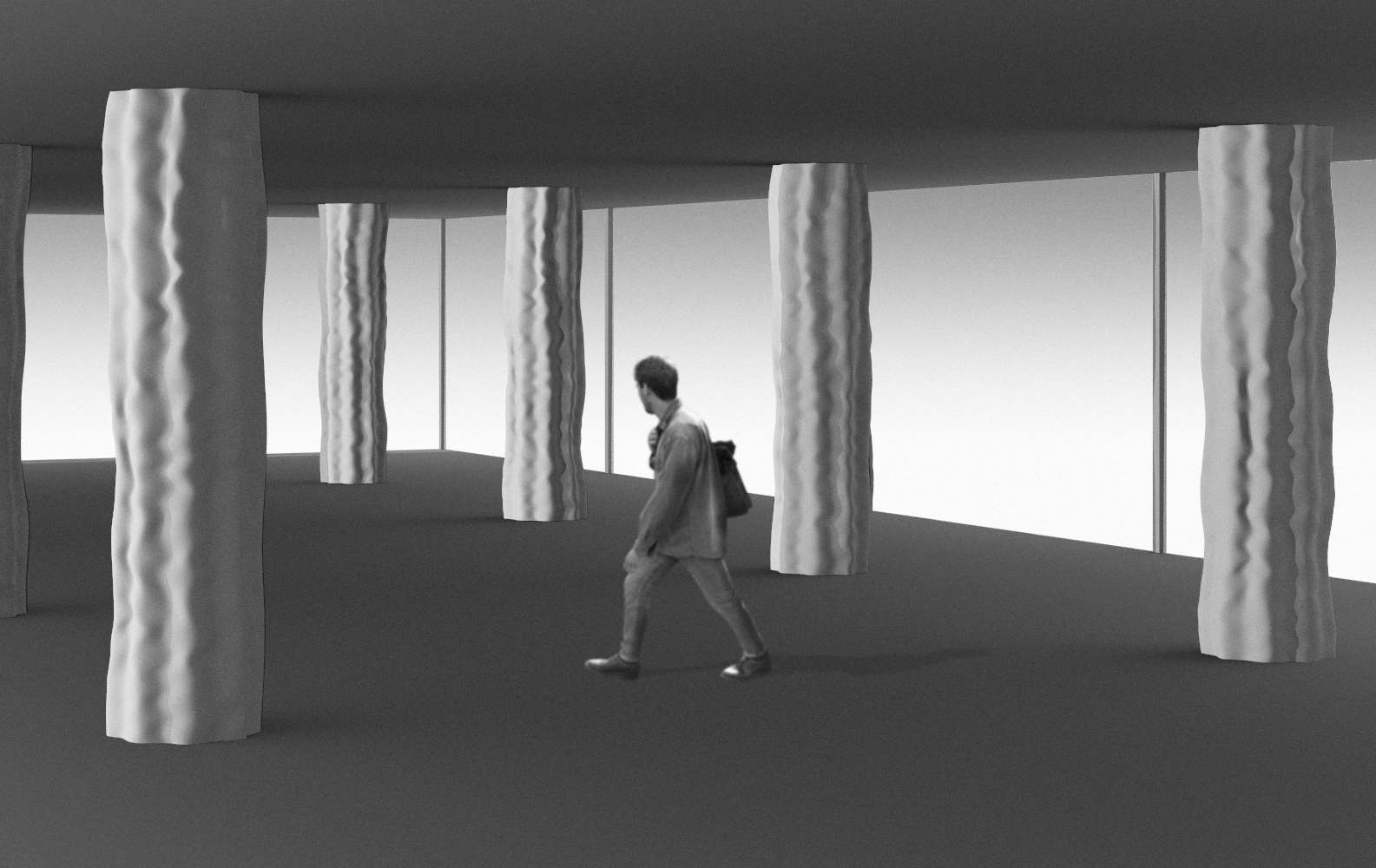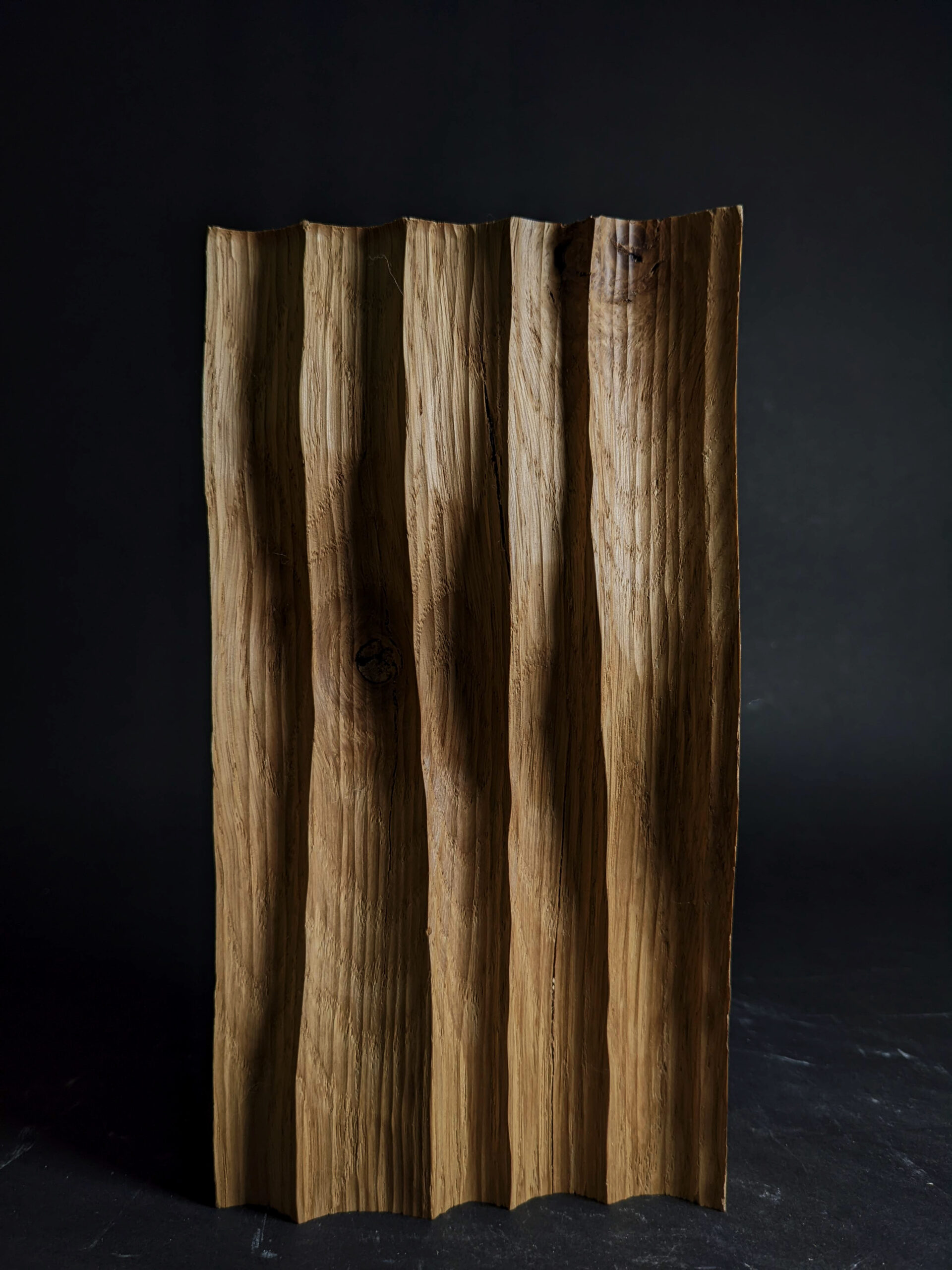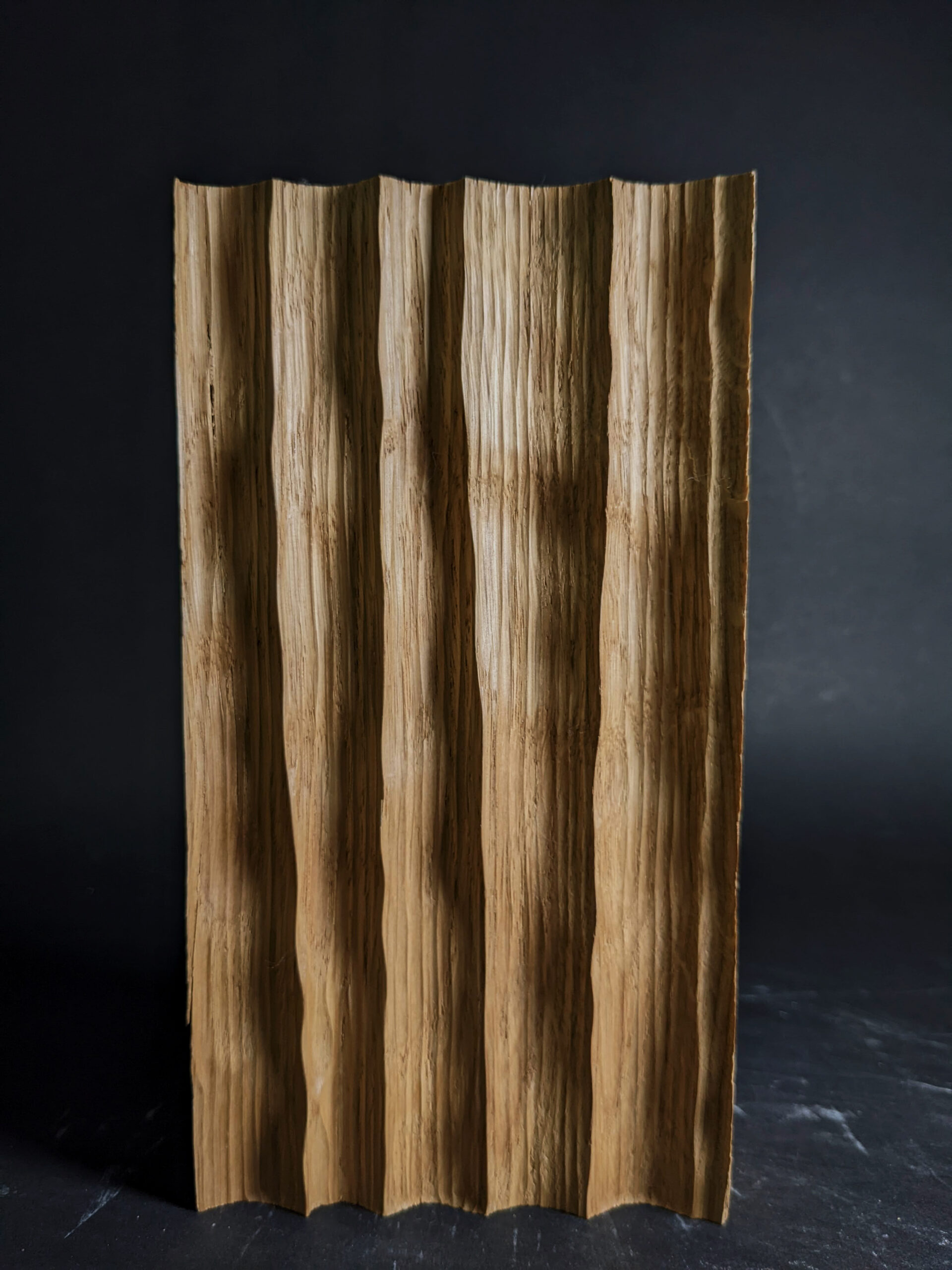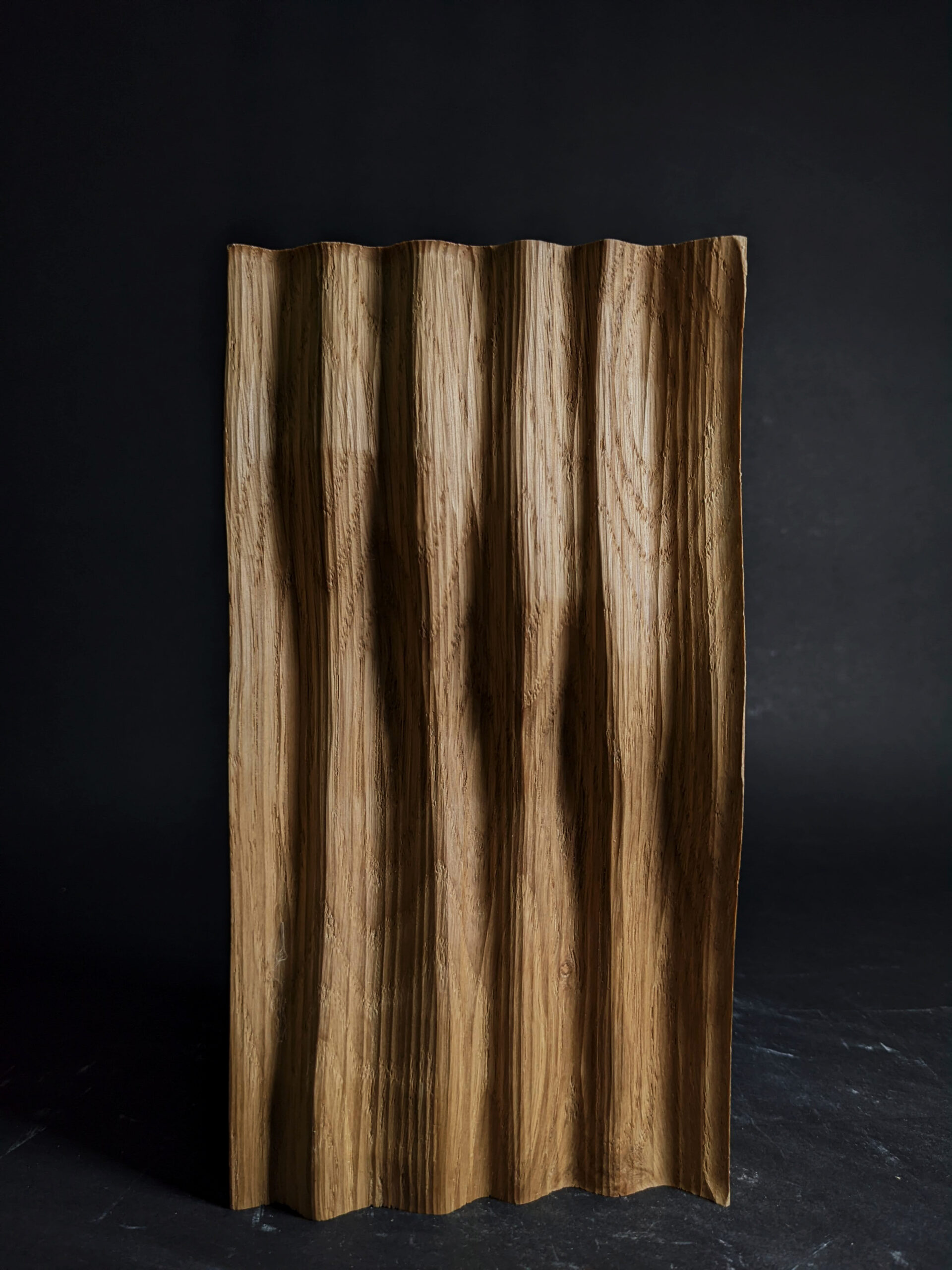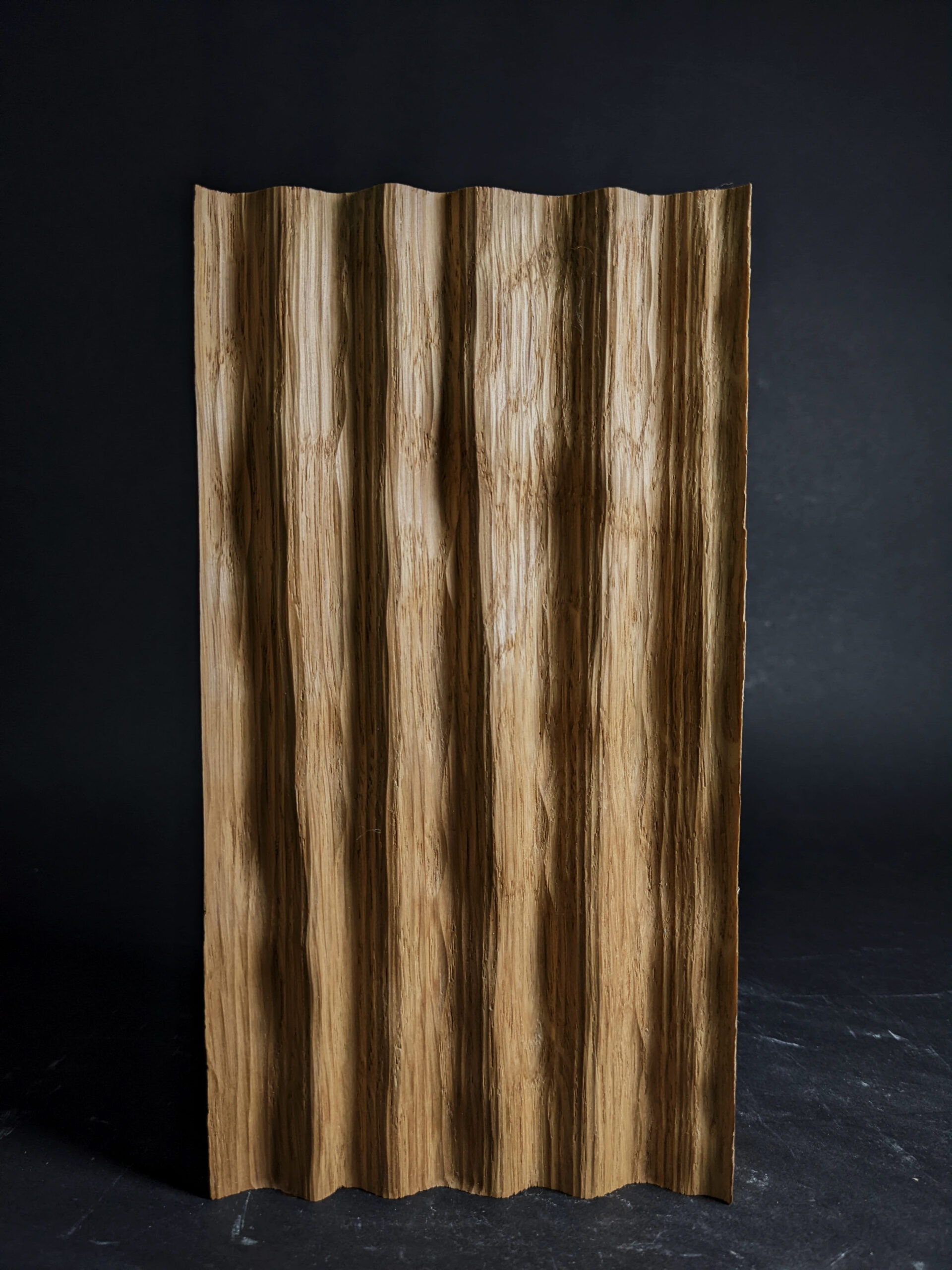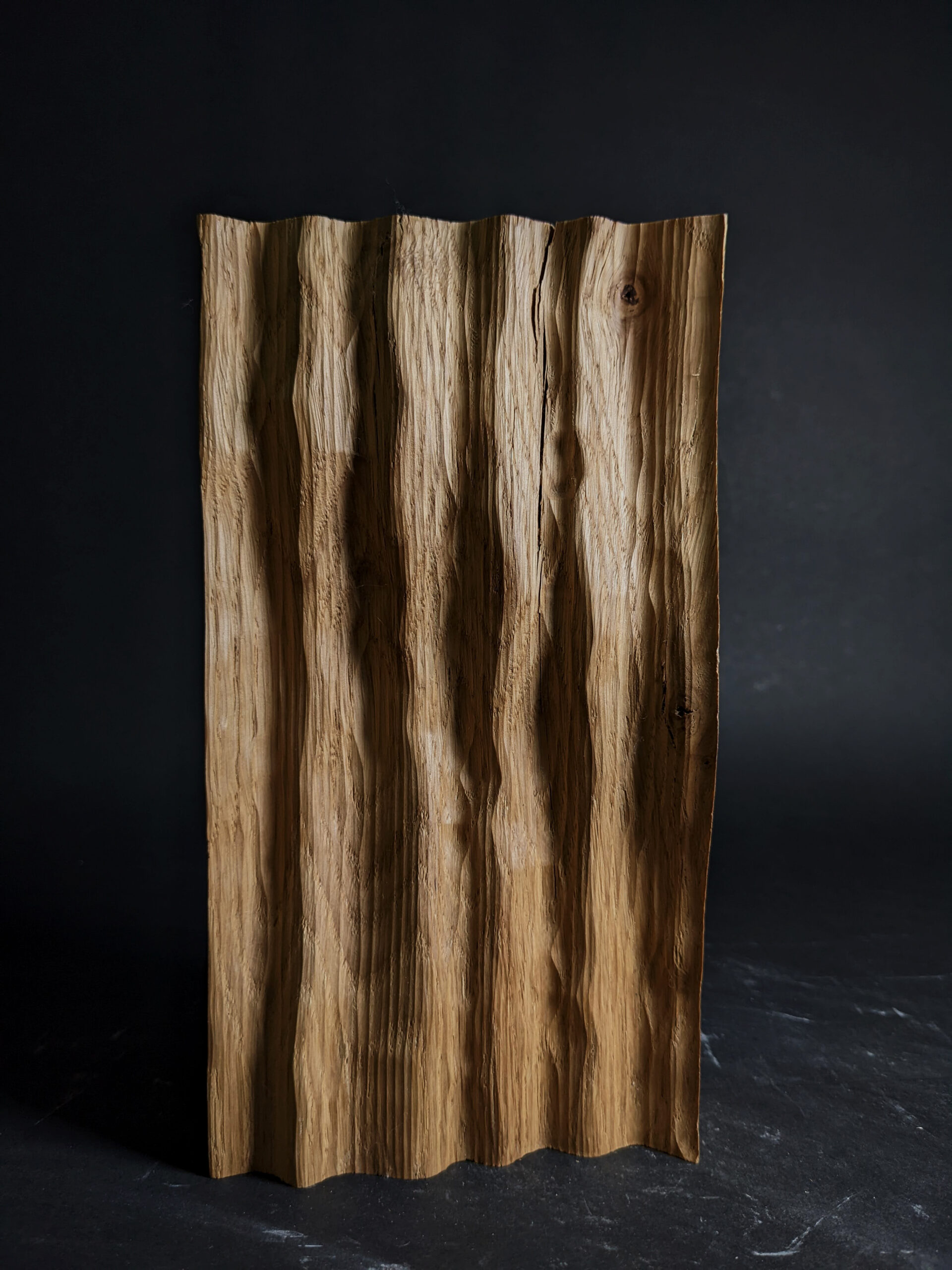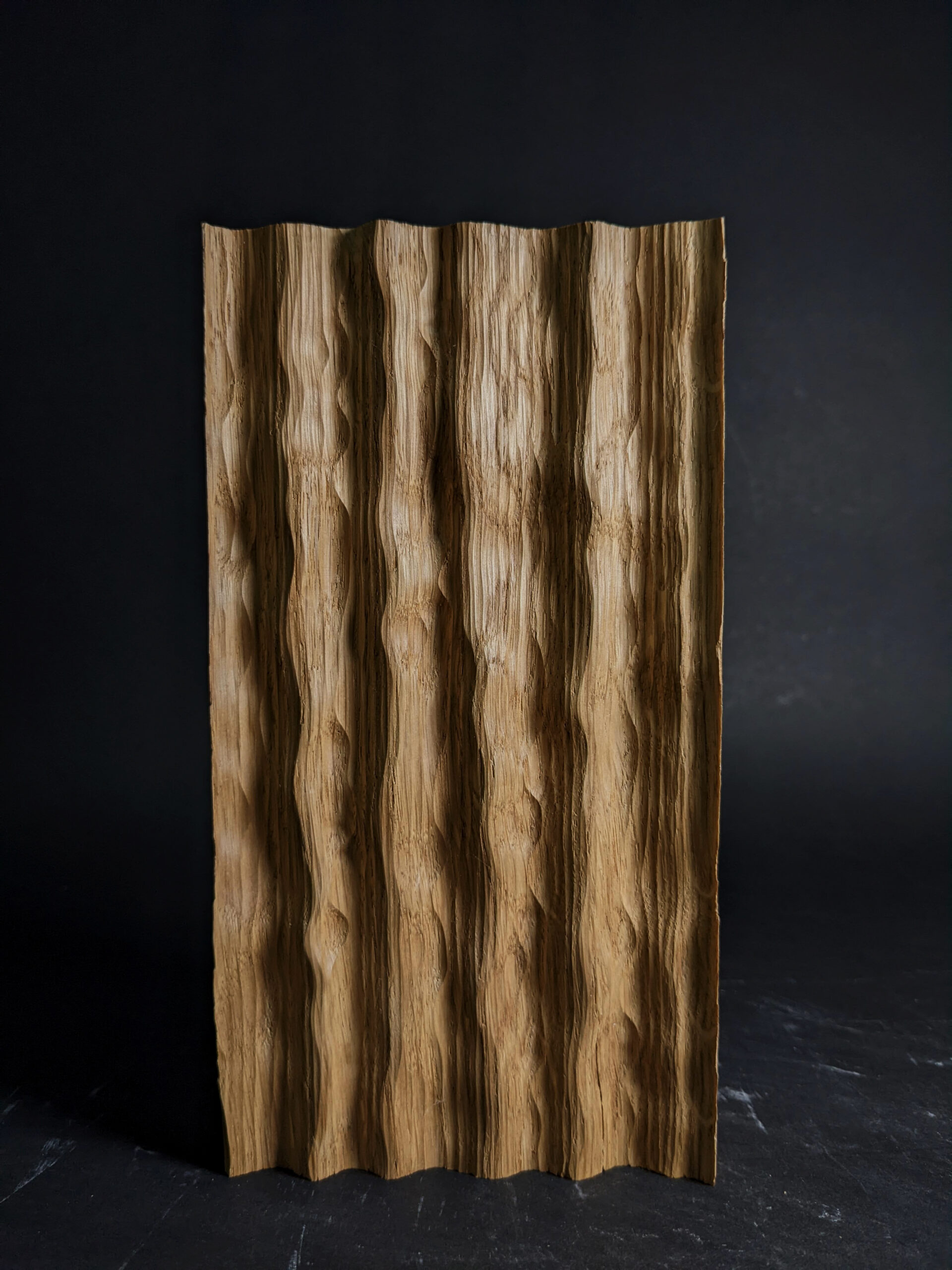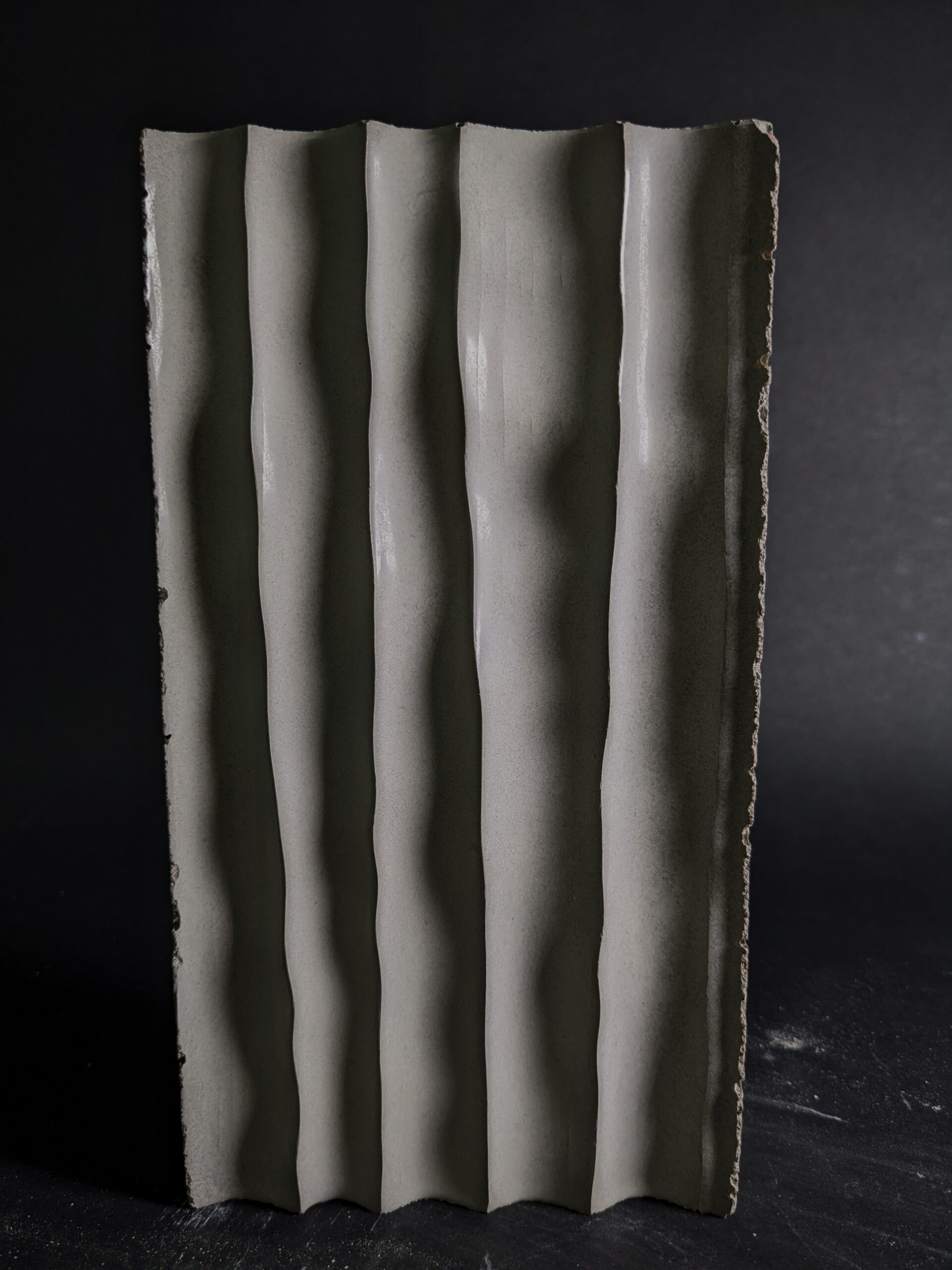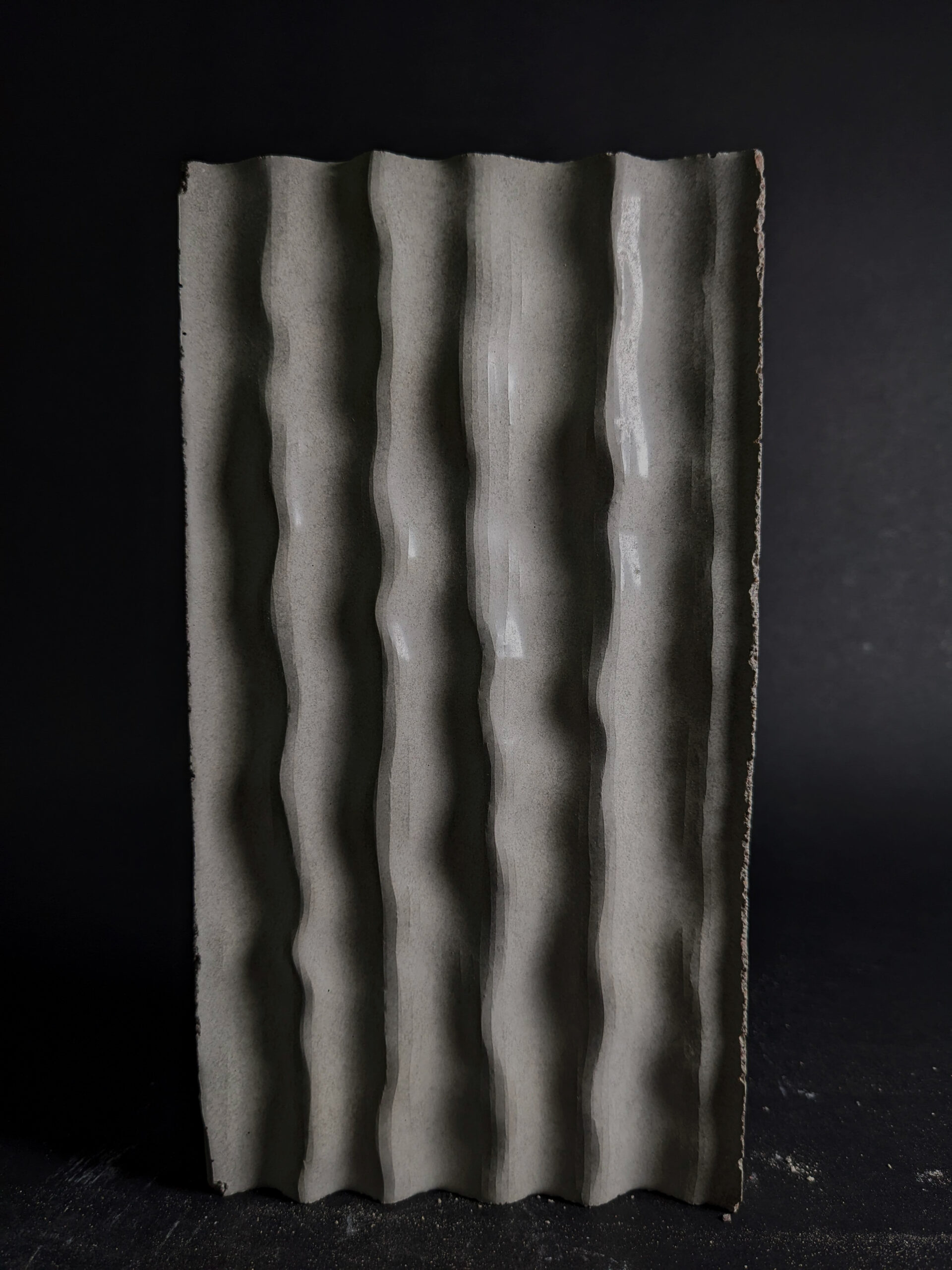Exploration 2: “Carved” textures
In this exploration the point of departure was wood carving and the small imperfections and irregularities that can be found in objects of this technique, as well as in other works of craft.
How can such irregularities be produced already in the design of the digital texture?
The method used in the experiment was simulating the imperfections by using an algorithm dependant on randomness in Grasshopper. Control points in the surfaces were moved a randomly generated distance (within a range) along a separate axis in three steps, and the surfaces were then rebuilt with the new slightly scattered points. Detractor points were also used, randomly placed to make the ridges in the surface vary in distance to one another.
The textures were made in six versions, with different ranges set for the random components. They were implemented in physical form first by milling them in a board of oak:
Two versions of the texture were then also casted in concrete:
One version was also tested in architectural scale digitally, by applying it to columns:
